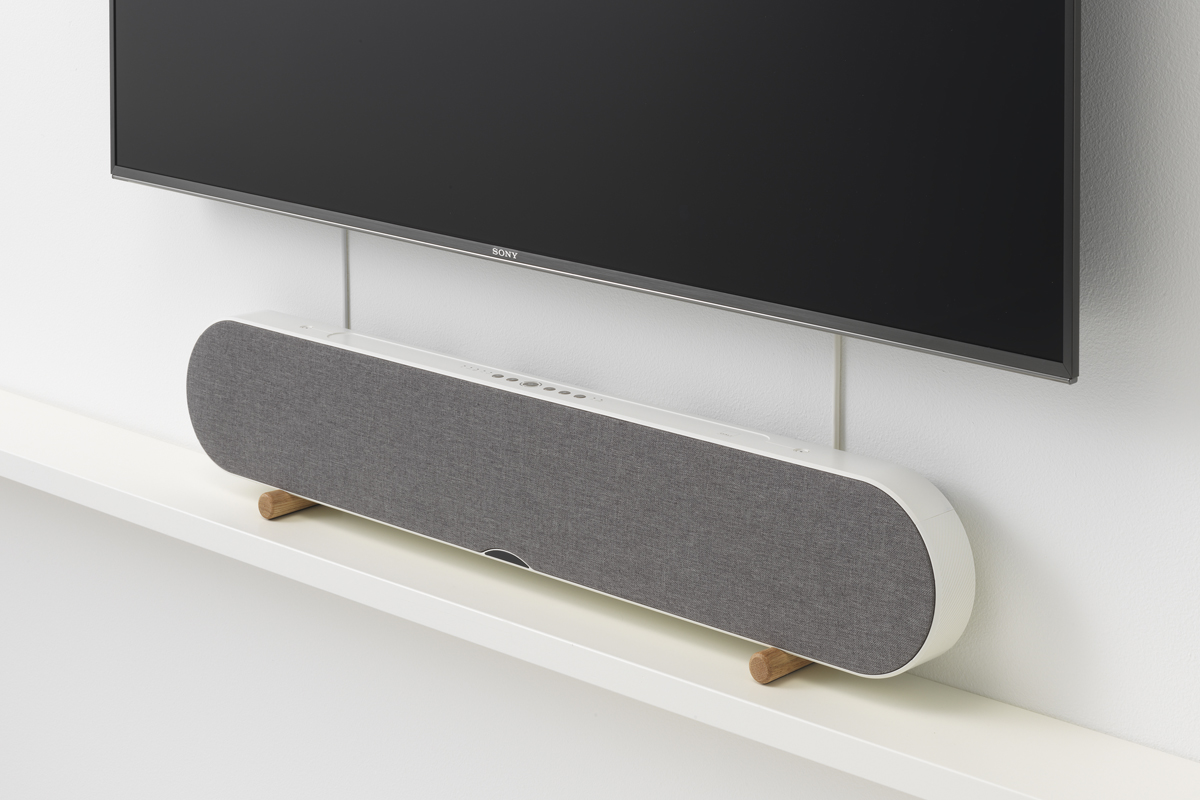In his coverage of CEDIA Expo 2019 for SoundStage! Global, Brent Butterworth called DALI’s Katch One soundbar ($999, all prices USD) the “product at the CEDIA Expo that I’d most like to have right at this very minute.” I found this surprising -- not because I had any doubts that the Katch One is a fine product, but because there were so many other lustworthy products at this year’s Expo, including several Brent outlined in his four show reports. A few highlights were Revel’s PerformaBe speakers, NAD’s T 778 nine-channel A/V receiver, and MartinLogan’s 40XW in-wall speaker, each of which has 40 driver-units. There were also lustworthy video products, including 4K laser projectors from Epson, JVC, and LG, and Sony’s modular Crystal LED wall display system.
So what was it about the Katch One that made it the one Brent wanted to take home? For one thing, it’s really pretty. True to its Danish heritage -- DALI stands for Danish Audiophile Loudspeaker Industries -- the Katch One has an elegantly minimalist design and some very clever mounting options.
And the Katch One sounds good, too, thanks to its innovative digital signal processing (DSP). I found that, with movies, the Katch One could produce a soundfield that extended far beyond its physical dimensions, and that it performed more than respectably with music.
Inside and out
Shaped like an elongated capsule, the Katch One measures 33.9”W x 6.5”H x 2.7”D. For this review, DALI provided a sample with the Mountain White finish: a fresh white enclosure with a nonremovable dark gray grille. The fit and finish were impeccable. The Katch One is also available with both its enclosure and grille tinted either Iron Black or a warm Ivory White.
You can mount the Katch One on a wall using the keyhole cutouts on its rear panel, but a more elegant method is to use the supplied leather straps, one end of which fastens to the wall, the other to the top surface of the Katch One, using supplied plastic clips. Signal cables (TosLink or HDMI) can be routed through the wall clips and behind the leather straps to jacks at the back of the Katch One, for a neat installation. You can also place the Katch One on a cabinet, sitting on supplied wooden feet that nicely complement the speaker’s styling.
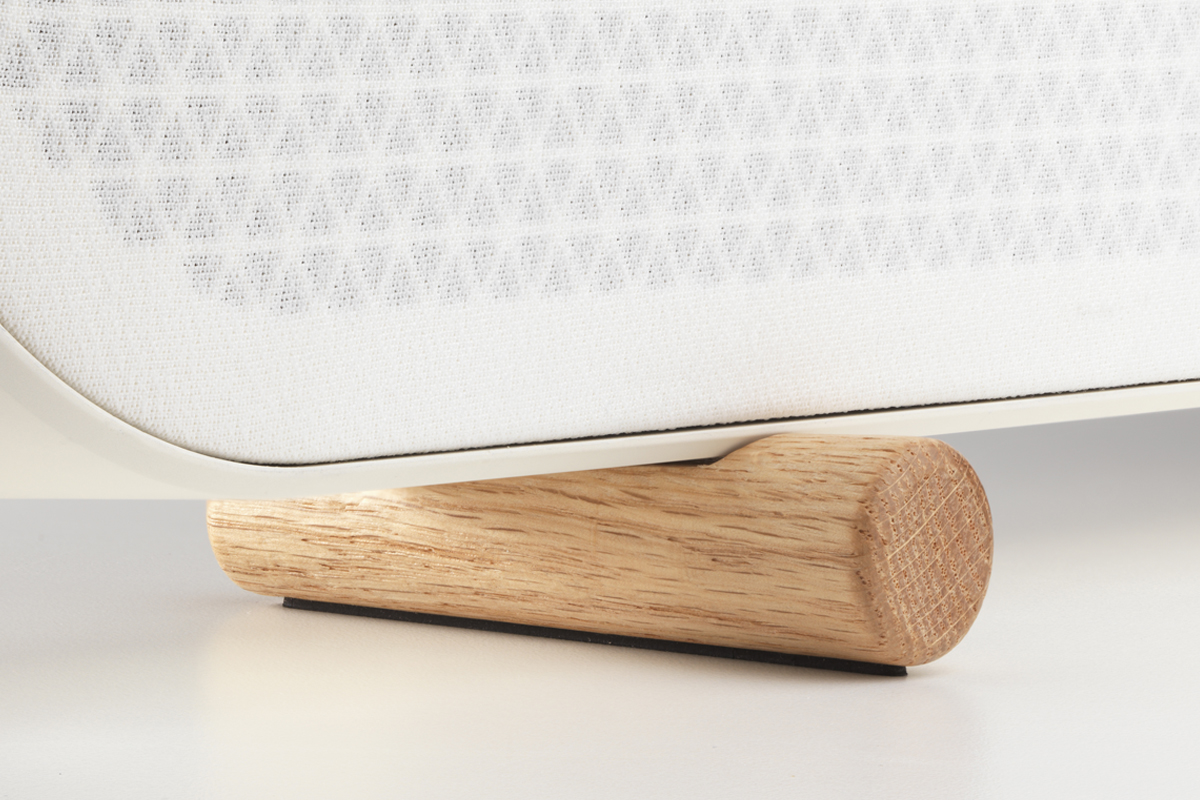
The Katch One has an HDMI port for connection to a display that supports HDMI-ARC. To use this, you may have to enable HDMI-CEC in your display’s setup menus. One of the DALI’s two TosLink inputs is earmarked for TV (it powers up the Katch One when it detects a signal from the TV), the other for connection to components such as disc players and game consoles; there are also an auxiliary input (3.5mm) and a subwoofer output (RCA). The Katch One also has Bluetooth connectivity, with support for the aptX and AAC codecs. Finally, a USB Type-A port can be used to charge devices like smartphones.
The Katch One is a two-channel, 2.5-way, hybrid active/passive speaker. For each channel it has a front-firing 21mm fabric soft-dome tweeter, a front- and a rear-firing 3.5” driver, and front and rear 4.5” passive radiators.
The midrange-woofers have outward-facing aluminum cones, with soft fabric dustcaps in the center. The inverted cones permit greater movement of air, DALI says, while maximizing the internal cabinet volume, and the combination of aluminum diaphragm and soft dustcap minimizes surface resonances. The rear woofers work with the wall behind them to reinforce the bass output and widen the soundstage.
Made of thermoplastic reinforced with glass fiber, the enclosure and front baffle are designed to optimize airflow from the drivers, DALI says. A casual knuckle-rap test indicated that the enclosure is quite rigid -- certainly far more so than those of bargain-basement, throw-in soundbars.
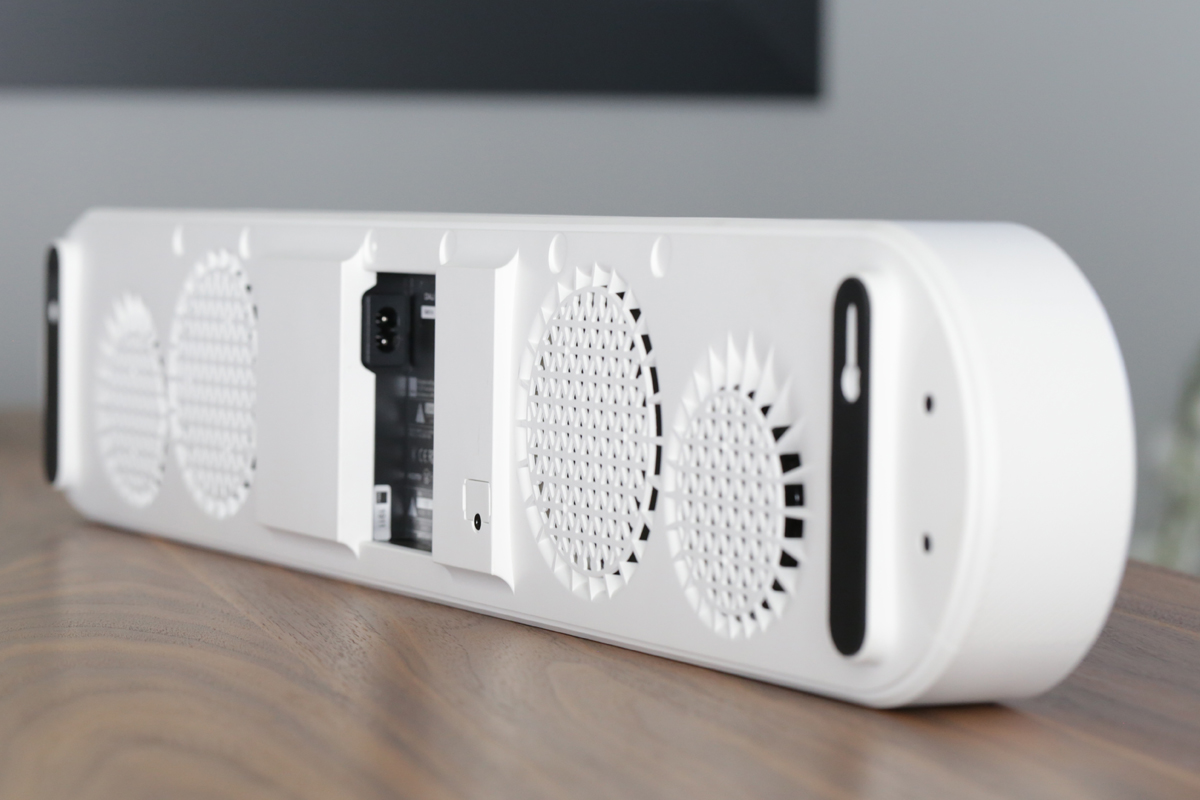
The front-firing midrange-woofers are crossed over to the tweeters at 2.5kHz via a conventional passive network. The rear-firing woofers hand off to the front drivers at 250Hz via DSP. The front and rear drivers have their own dedicated class-D amplifiers, each with 50W peak output.
When a subwoofer is connected, the Katch One automatically engages a DSP-based fourth-order crossover centered on 94Hz, that frequency serving as both a low-pass filter for the sub and a high-pass filter for the soundbar. As DALI wrote in an e-mail exchange with me, “By not having the burden of handling the low frequencies, the Katch One will be able to play louder and cleaner.” Since the Katch One is handling the crossover to the sub, users should set the crossover frequency on the subwoofer to maximum or full range, and use the sub’s controls to adjust level and phase.
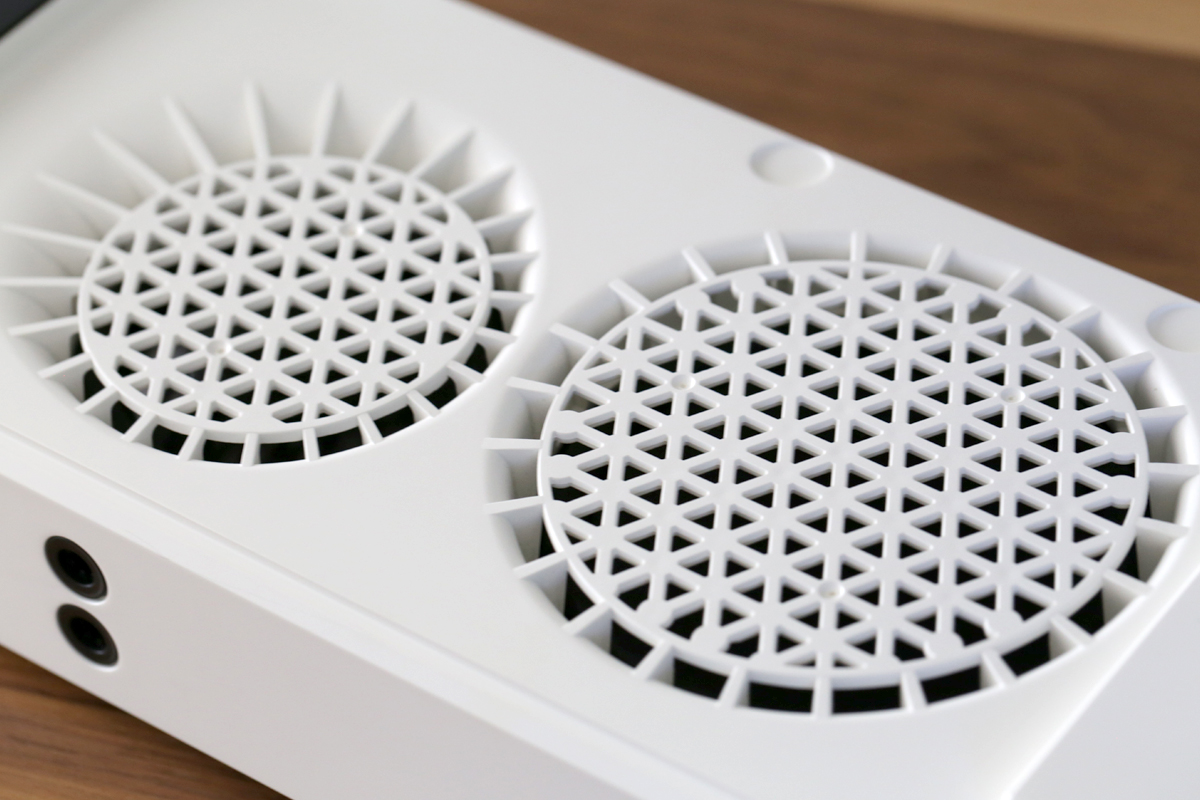
Besides implementing the crossover, the DSP performs dynamic equalization, allowing the Katch One to deliver maximum low-frequency output, while minimizing distortion and preventing amplifier clipping and excessive driver excursions. The DSP also enables the Wide listening mode, a feature that I found hugely effective with movies (see below).
There are buttons on the Katch One’s top panel for setting the listening mode, selecting sources, adjusting volume, Bluetooth pairing, and turning the soundbar on and off. These functions are duplicated on the supplied remote control, which adds a mute button.
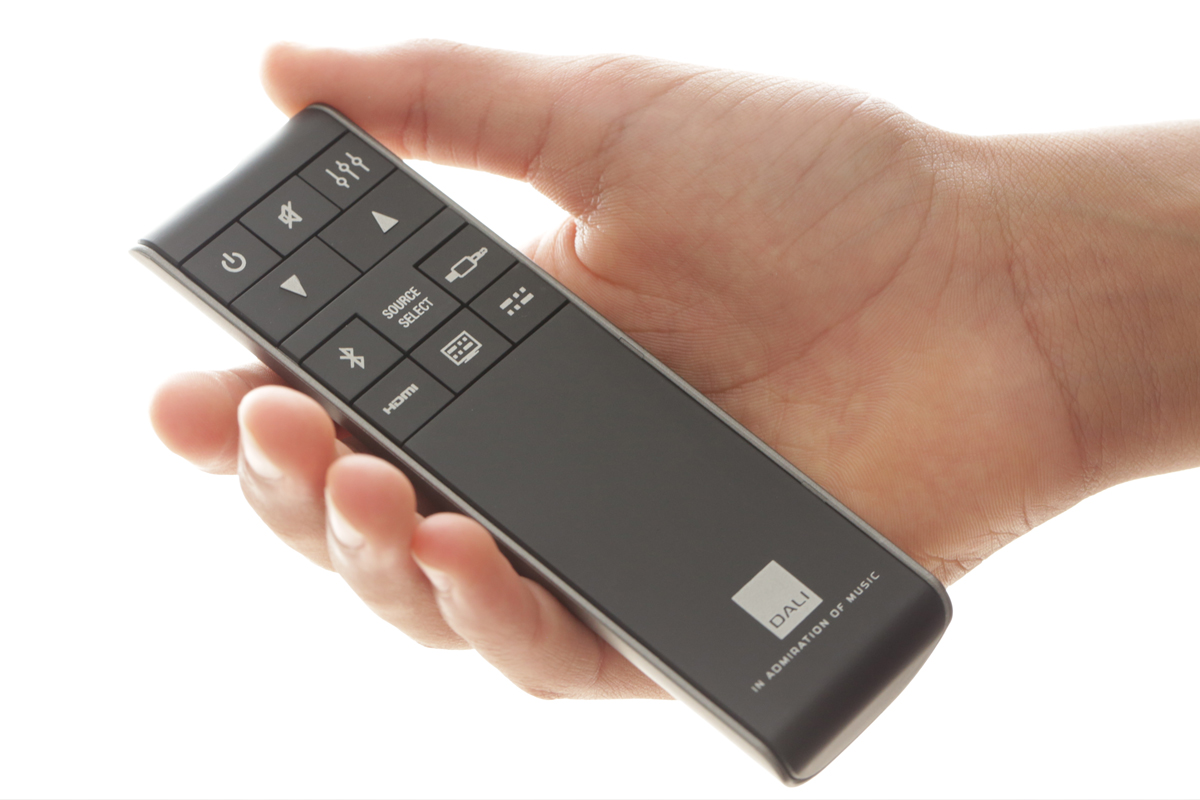
Setup, listening, and watching
As is typical nowadays, the only documentation provided with the Katch One is a Quick Start Guide. But that leaflet will be all most people will need -- setup and daily use are pretty straightforward. A full manual is available online, along with a very informative white paper about this model.
I tested the Katch One in the basement family room of my home in Toronto. After pushing its wooden feet into inserts on the soundbar’s bottom, I set it on a credenza below my Vizio 50” HDTV, and connected one end of an HDMI link to its HDMI input and the other the TV’s HDMI-ARC port. When I turned on the TV, a message appeared on the screen: “The audio device has been found and set up. The TV remote adjusts the volume.” Indeed it did -- one of the nice things about HDMI-ARC.
Ridley Scott’s 1982 sci-fi thriller Blade Runner is one of my favorite movies of all time. I’d been itching to see Denis Villeneuve’s sequel, Blade Runner 2049, since its 2017 release, and was happy to find the movie on Netflix just as I was reviewing the Katch One. To say I was impressed with what I heard would be an understatement.
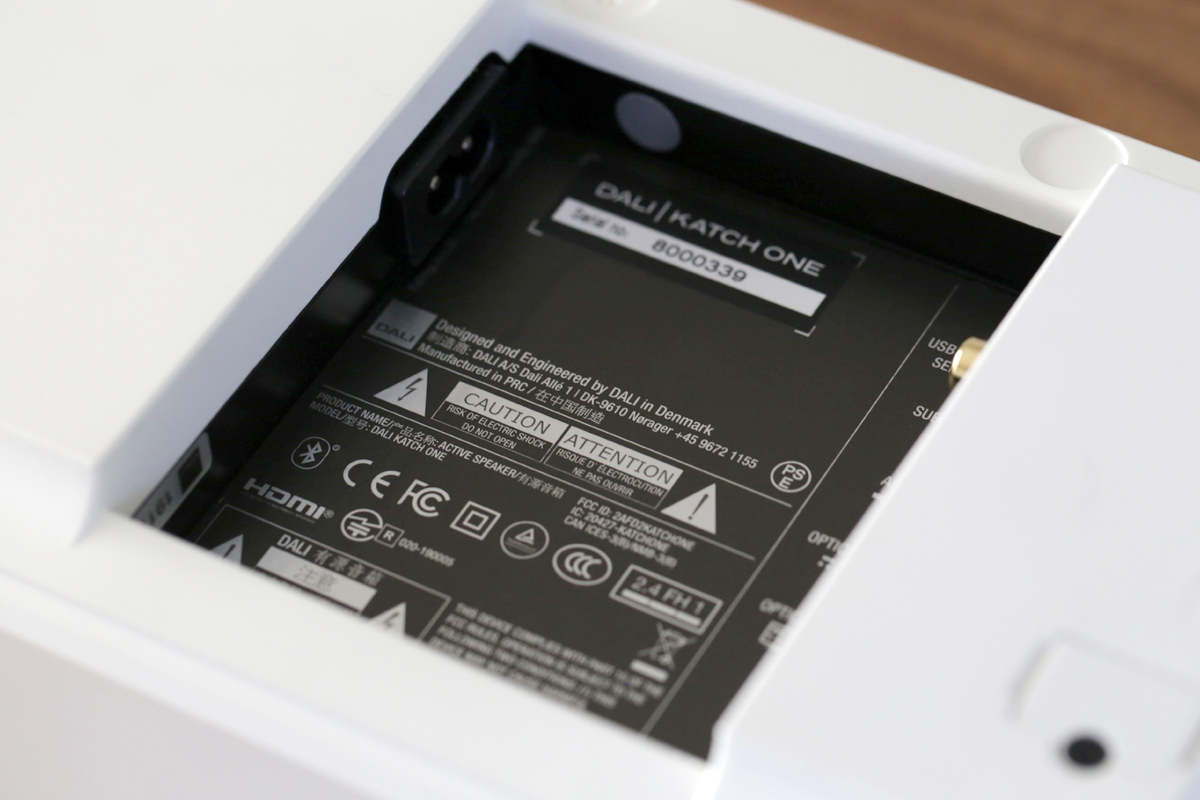
Like the original Blade Runner but some decades later, the sequel presents a dystopian vision of post-apocalyptic Los Angeles, with grimy streets and buildings, relentless drizzle, garish 3D neon signs, and creepy inhabitants. The sound effects -- pelting rain, jarring PA announcements, noisy overhead vehicles -- are just as disturbing. With Wide mode enabled, these effects extended far to either side of the screen, and, with vehicle flyovers, far out into the room. I found the latter amazing -- although the Netflix stream had a 5.1-channel soundtrack, the Katch One was receiving via HDMI-ARC only a two-channel downmix. Critically, Wide mode didn’t sound gimmicky or artificial. Sound effects that were tied to actions on the screen -- for example, footsteps of a character entering a room -- were properly focused, rather than vague or diffuse.
The rumbly bass that accompanies many of the dark street scenes sounded full and foreboding, but definitely not subterranean. Big dramatic effects, such as the crash landing of Agent K (Ryan Gosling) in the ruins of San Diego, sounded bold and exciting, but lacked visceral impact. I could hear the bass, but definitely didn’t feel it elsewhere in my body. No surprise there -- you can’t expect visceral, subterranean bass from a compact soundbar with 3.5” midrange-woofers. What was impressive was the Katch One’s composure with this demanding content -- it never sounded strained or distressed.
Wanting to hear what a subwoofer might contribute to the Katch One’s performance, I connected Totem Acoustic’s Kin to the soundbar’s sub output. After connecting the sub but before turning it on, I could hear that the DALI’s bass output was markedly reduced, confirming that the soundbar’s high-pass filter had indeed been activated.
The Kin Sub ($499) has an 8” driver with a carbon-fiber cone in a sealed cabinet, powered by a 150W amplifier. It’s compact, and probably typical of the kind of subwoofer most people would mate with a Katch One. While the Kin Sub didn’t deliver hit-you-in-the-chest bass, it made a big difference with Blade Runner 2049. The rumbly bass sounds that pervade the movie were deeper and more powerful, and big sound effects, like Agent K’s crash landing, had greater impact.

Wide mode also proved effective with Tricky Dick & the Man in Black (2018), part of Netflix’s documentary series ReMastered, about Johnny Cash’s 1970 concert at the White House. This might seem surprising, because much of the archival footage used in the film has monaural sound. Besides several performances by Cash (including from his legendary 1968 concert at Folsom Prison), the documentary includes footage of battles in Vietnam, and protests and political rallies in the US. For these scenes the producers added sound effects: street noise for the protest scenes, artillery fire for a Vietnam sequence. Along with the background music, these effects seemed to emanate far to either side of the TV, and far out into the room, to make my viewing experience much more immersive. There was no downside -- the monaural concerts and audio from the news footage weren’t artificially stretched.
The documentary also contains many interviews -- with Cash’s brother Tommy and sister Joanne, his son, John Carter Cash, his fellow musicians, and several political figures. Their words were tied to the screen, even with Wide mode engaged, even though the manual recommends using Focus mode for news, documentaries, and talk shows. But in Tricky Dick & the Man in Black, when the only audio was from interviewees, I didn’t hear much of a difference when I switched to Focus mode. Based on this experience, I’d be inclined to leave the Katch One in Wide mode at all times.
Through the Katch One, the big bass effects now accompanying archival news footage were very impressive but not room-shaking. Predictably, adding the Kin Sub made these effects more powerful and dramatic.
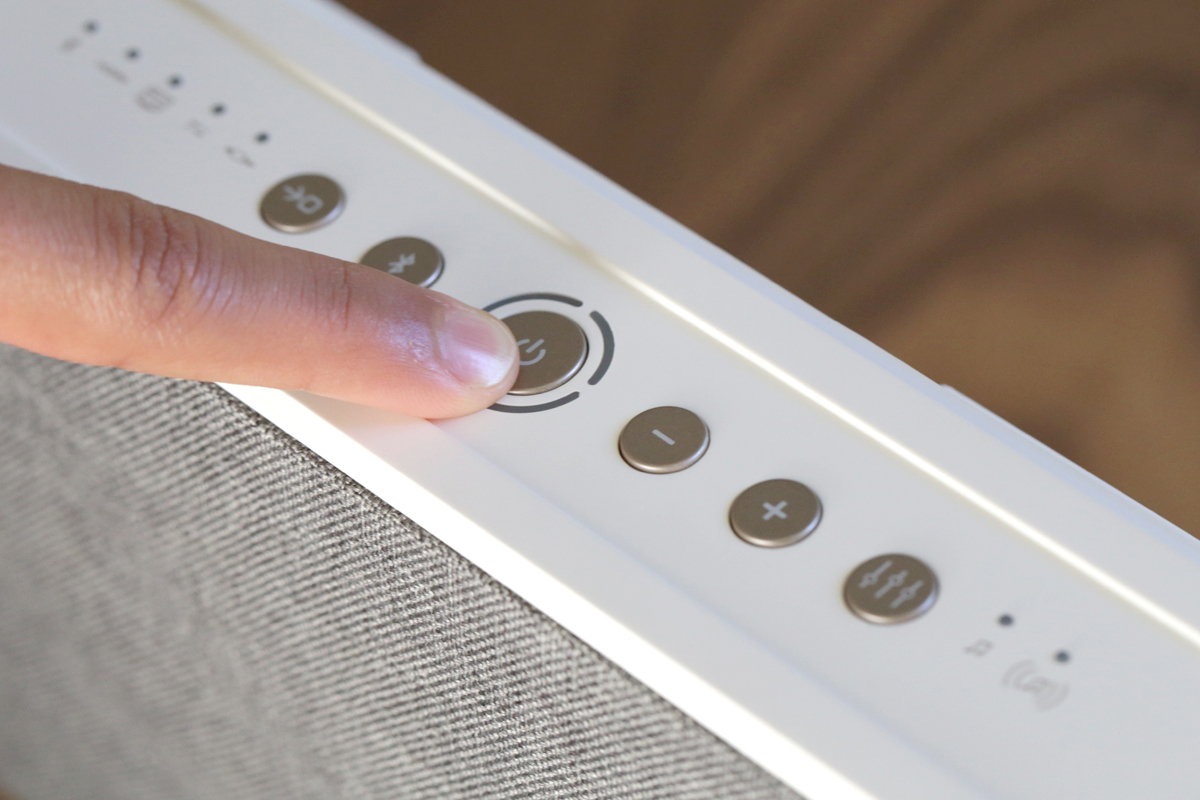
Wanting to hear how the Katch One would fare with music, I paired it to my LG G7 ThinQ smartphone, then streamed music via Bluetooth to the soundbar from the phone’s Qobuz, Tidal, and Music apps.
Not only is jazz piano trio one of my favorite musical genres, I also find it useful for assessing speakers. Double bass is a great test for bass definition, drums for speed and impact, and acoustic piano for timbral consistency. So it was fortuitous that when I was testing the Katch One, my favorite power-jazz trio, the Bad Plus, released a new album, Activate Infinity (16-bit/44.1kHz FLAC, Edition/Tidal), which I streamed to the Katch One from the Tidal app on my smartphone. With “Dovetail Nicely,” one of the album’s higher-energy tracks, Reid Anderson’s double bass sounded surprisingly deep and impactful for a speaker of the Katch One’s size, if somewhat thuddy. Dave King’s skittering drum work had good snap and sizzle. Orrin Evans’s piano sounded a bit hard in the upper octaves, a little hollow in the middle octaves. Also, the overall sound was slightly compressed and mushed together.
Adding the Kin Sub made a significant improvement. Bass definition tightened up and gained impact. Equally significant was how adding the sub opened up this track’s dense mix. With the high-pass filter engaged, the Katch One now sounded less congested -- I could hear each musician more clearly, and better follow their interplay. While some hollowness remained in the middle octaves of the piano, having the sub in the chain reduced the hardness in the upper octaves.
Comparison
I didn’t have another soundbar on hand to compare with the Katch One, but I did have the Naim Mu-so 2nd Generation wireless music system ($1599), which I reviewed in July. This isn’t quite as much an apples-with-oranges comparison as it might seem at first. Granted, the Mu-so 2nd Generation costs $600 more than the Katch One -- but add a subwoofer and things even out. Together, the Katch One and Totem Kin Sub cost only $100 less than the Mu-so 2nd.
Like the Katch One, the Mu-so 2nd has HDMI-ARC connectivity; playing movie and TV soundtracks is clearly one intended application, if a secondary one -- the Mu-so 2nd is, first and foremost, a music player, while the Katch One is intended mainly for movie and TV watching, with music-only listening secondary. Even so, I found this comparison revealing, partly because it revealed how good each of these components is in its secondary role.
With Blade Runner 2049, the Mu-so sounded smoother and more powerful than the Katch One without the subwoofer connected. In fact, through the Mu-so 2nd Generation, the bass impact approached that of the DALI-Totem combo. Through the Naim, sound effects in the nightmarish street scenes in L.A., and dramatic scenes like the missile attack in the ruins of San Diego, were better differentiated -- the Katch One sounded slightly compressed by comparison, even with the Kin Sub connected.
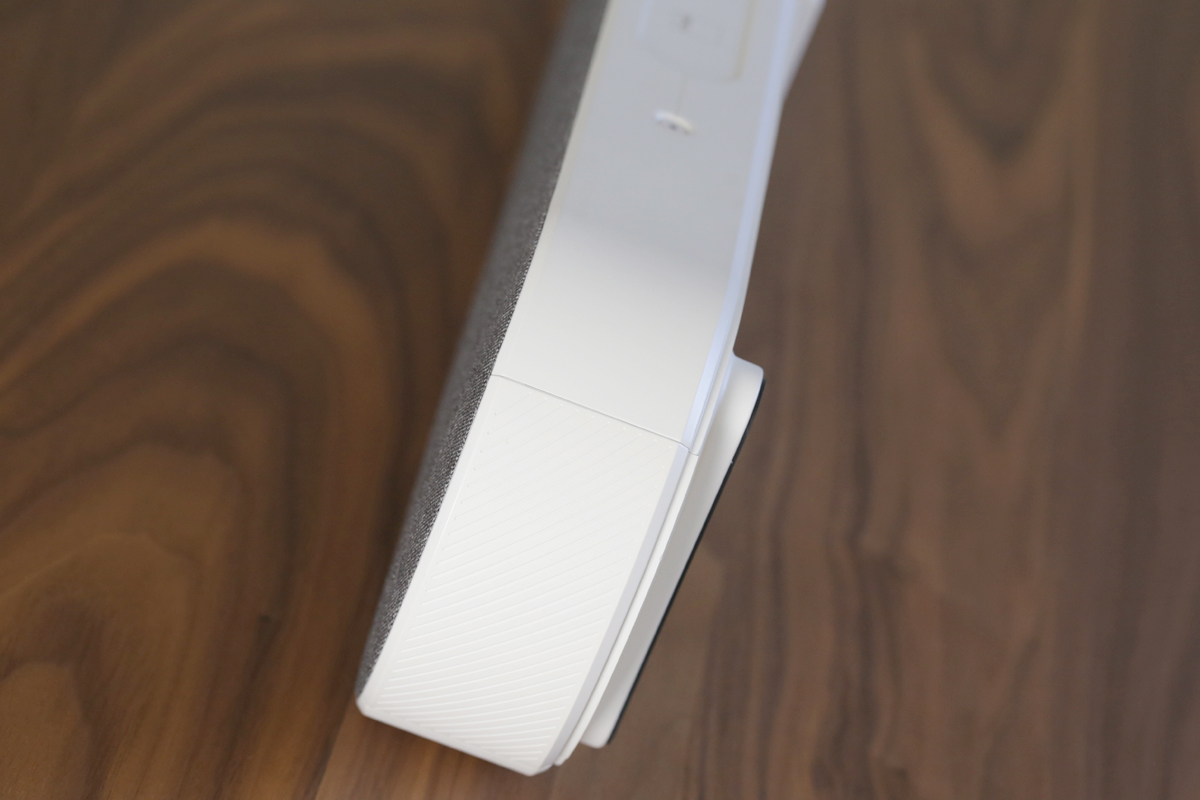
The Katch One outshone the Mu-so 2nd in spatial presentation. The Mu-so’s soundstage extended past the speaker’s boundaries -- in some scenes, it was even a bit wider than my 50” TV -- but it was nowhere near as wide as the Katch One’s soundstage with Wide mode enabled, and effects like flyovers didn’t extend out into the room as they did with the Katch One in Wide mode. With this film, the DALI soundbar delivered a far more immersive experience than the Naim music player.
Through the Mu-so 2nd, voices of interviewees in Tricky Dick & the Man in Black lacked the slightly raspy character I’d heard through the Katch One. But the background music and sound effects that accompanied archival news footage were nowhere near as spacious as they’d been through the Katch One.
I streamed the Bad Plus’s “Dovetail Nicely” to the Mu-so 2nd from the Tidal client in the Naim app. Compared to the Naim, Reid Anderson’s double bass sounded more impactful through the Katch One and Kin Sub, as well as snappier and more distinct. But compared to the Katch One without the Kin Sub, the Mu-so rendered Anderson’s bass more tunefully -- the subwooferless Katch One was thuddier. The Mu-so 2nd had more output in the midrange, which meant that the piano had more body -- piano tone through the Katch One was a bit thin by comparison, with or without the sub. Overall, I found the Naim Mu-so 2nd Generation a little more exciting and dynamic on this high-energy track than the DALI with no sub, with a more neutral sound. But the sound of the DALI when paired with the sub was more engaging -- it had more drive and swing.
Conclusion
After spending a few weeks with DALI’s Katch One soundbar, I entirely see Brent Butterworth’s point. I think a lot of people will want to bring home a Katch One. It’s beautifully designed, and has a very appealing feature set.
Soundbars are by definition compromise products, but in the Katch One those compromises have been well thought out and well executed. It would be unreasonable to expect it to deliver the dynamic impact and spatial envelopment of a full surround system with action and sci-fi movies, but the Katch One does provide a pretty good facsimile of that experience.
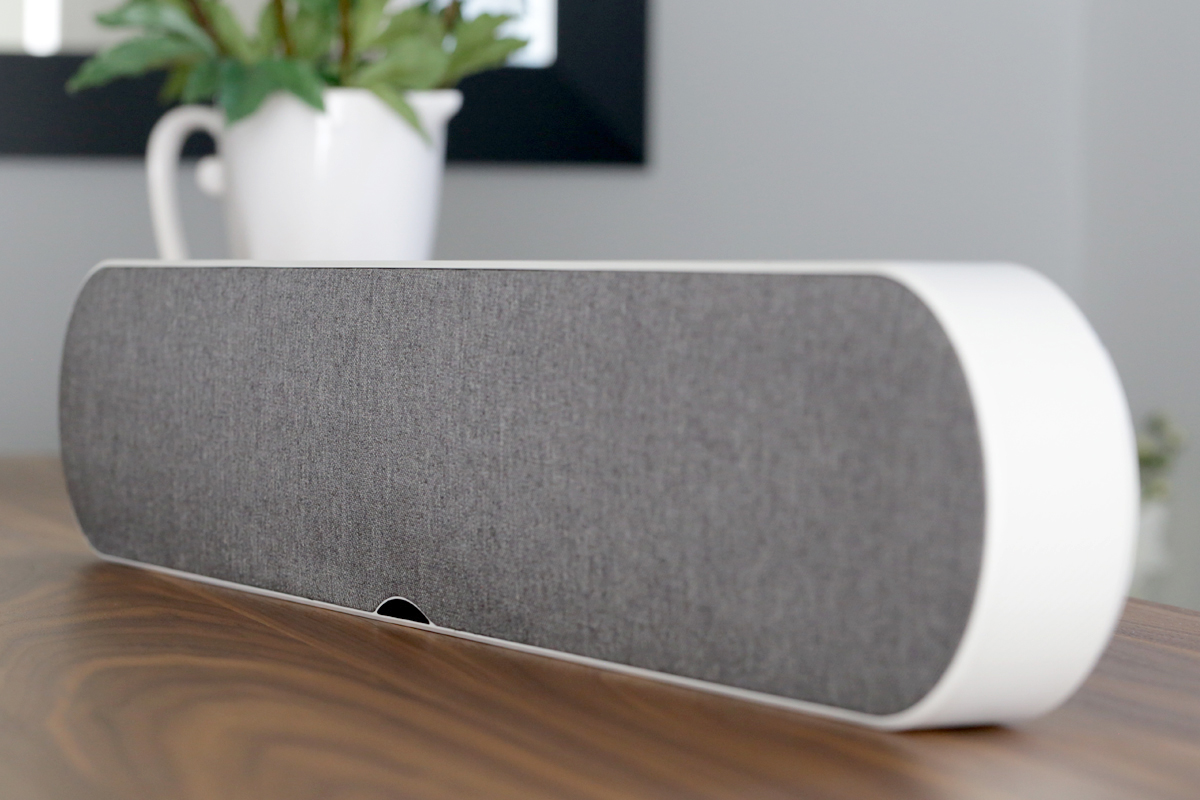
It also does well with music. While audiophiles would want a better system for sit-down listening, the Katch One is eminently suitable for casual or background listening.
I think that people who are serious about sound will be very happy to have a Katch One in a secondary entertainment room, and many non-audiophiles will be happy with a Katch One as their primary listening speaker. With its compact, stylish design, DALI’s Katch One can find a home in all kinds of spaces, from comfortable dens to elegant living rooms.
. . . Gordon Brockhouse
Associated Equipment
- Sources -- Vizio D50-D1 50” HDTV, LG G7 ThinQ smartphone
- Subwoofer -- Totem Kin Sub
- Music system -- Naim Audio Mu-so 2nd Generation
DALI Katch One Soundbar
Price: $999 USD.
Warranty: Two years parts and labor.
DALI
Danish Audiophile Loudspeaker Industries
Dali Allé 1
9610 Nørager
Denmark
Phone: +45 9672-1155
E-mail:
Website: www.dali-speakers.com
US distributor:
The Lenbrook Group
633 Granite Court
Pickering, Ontario, Canada -- L1W 3K1
Phone: (905) 831-6555
E-mail:



